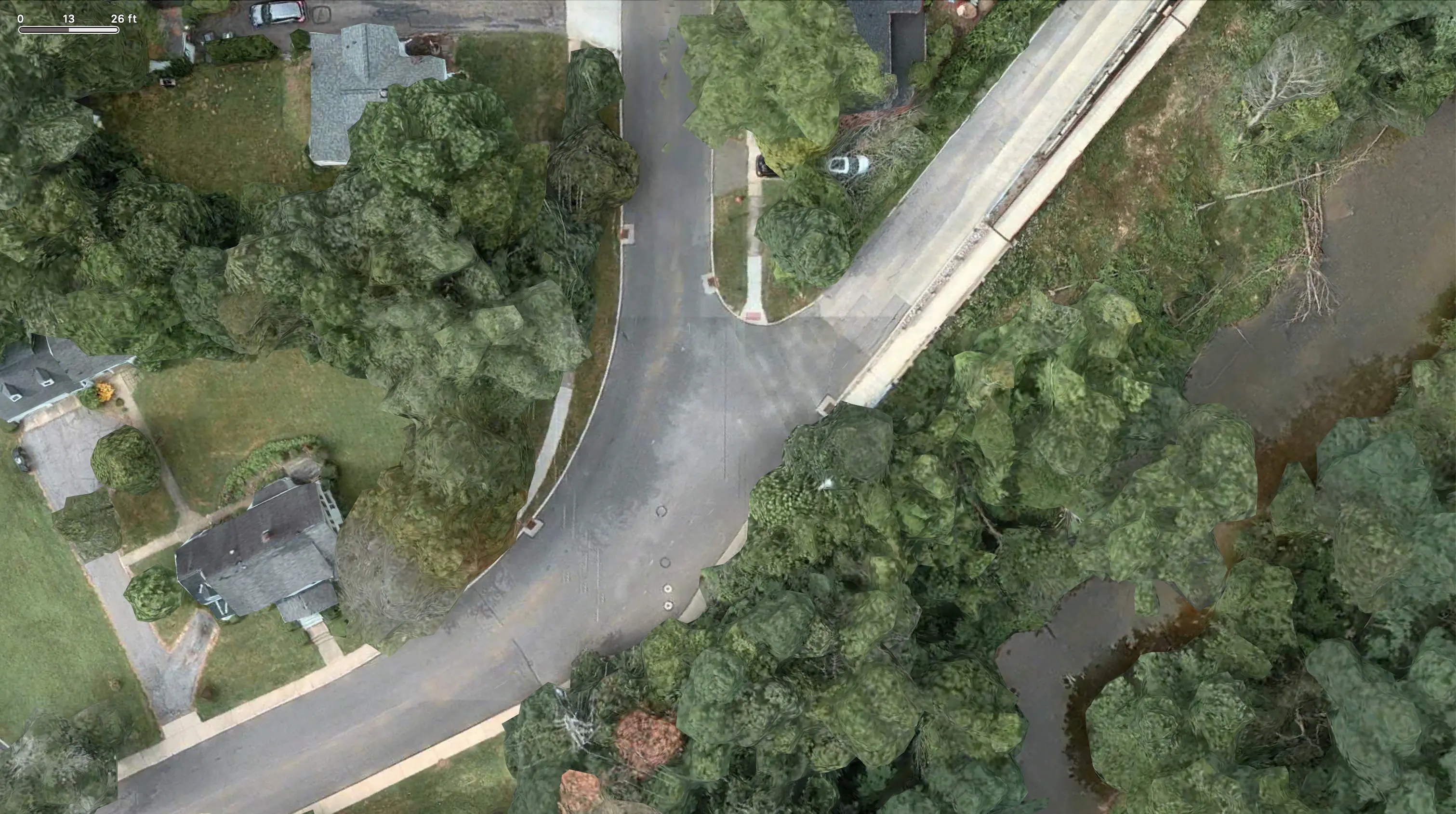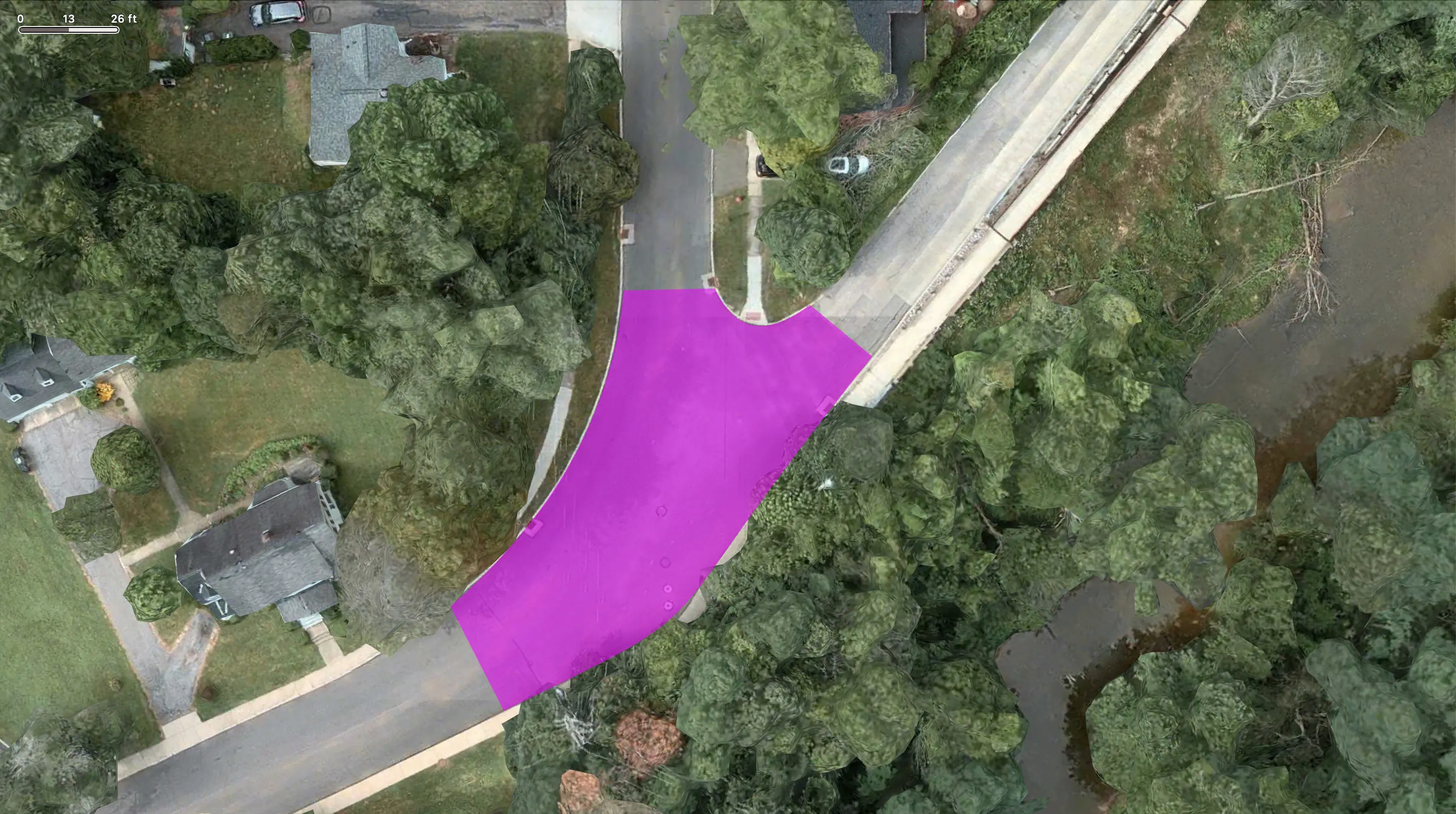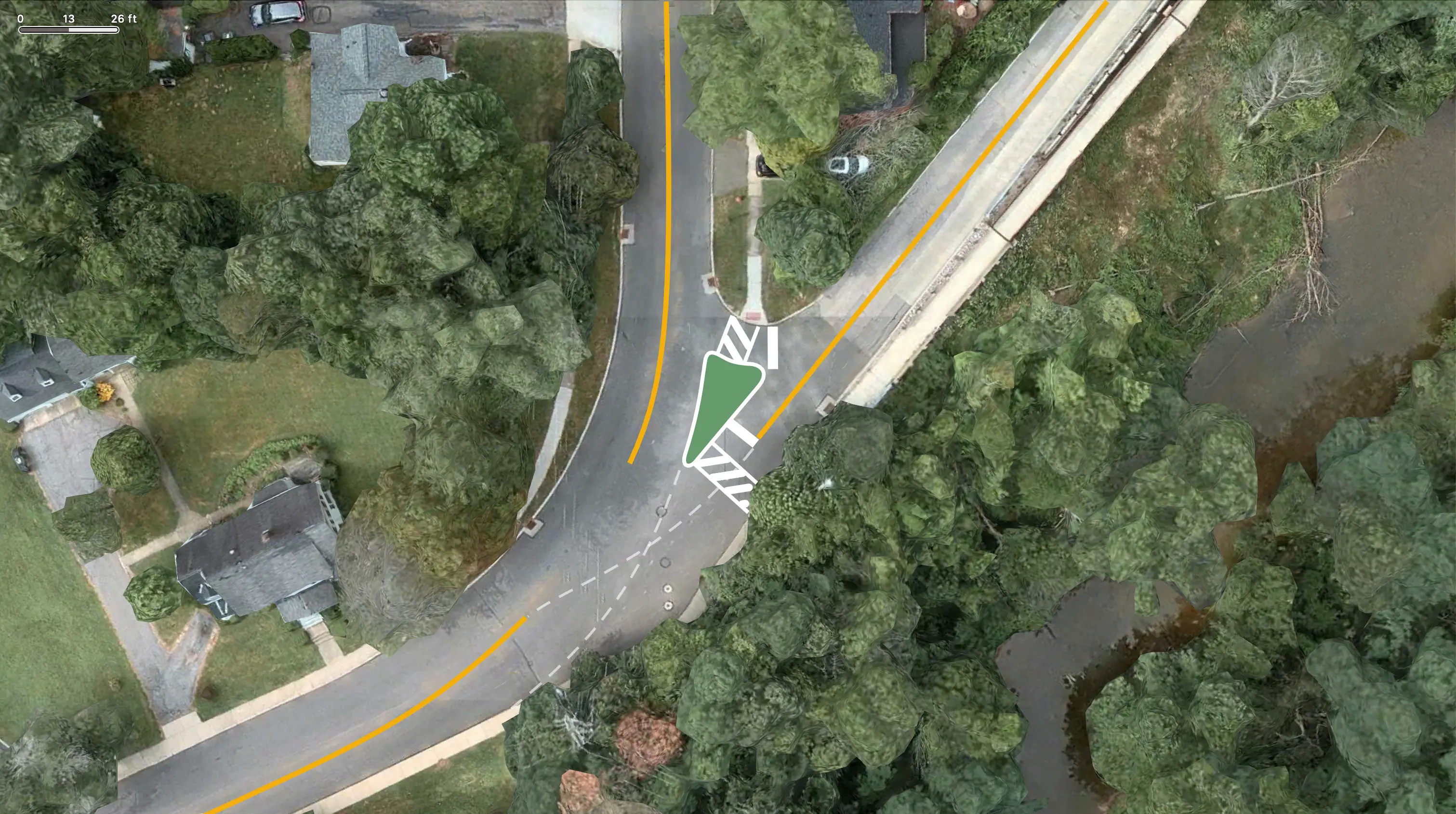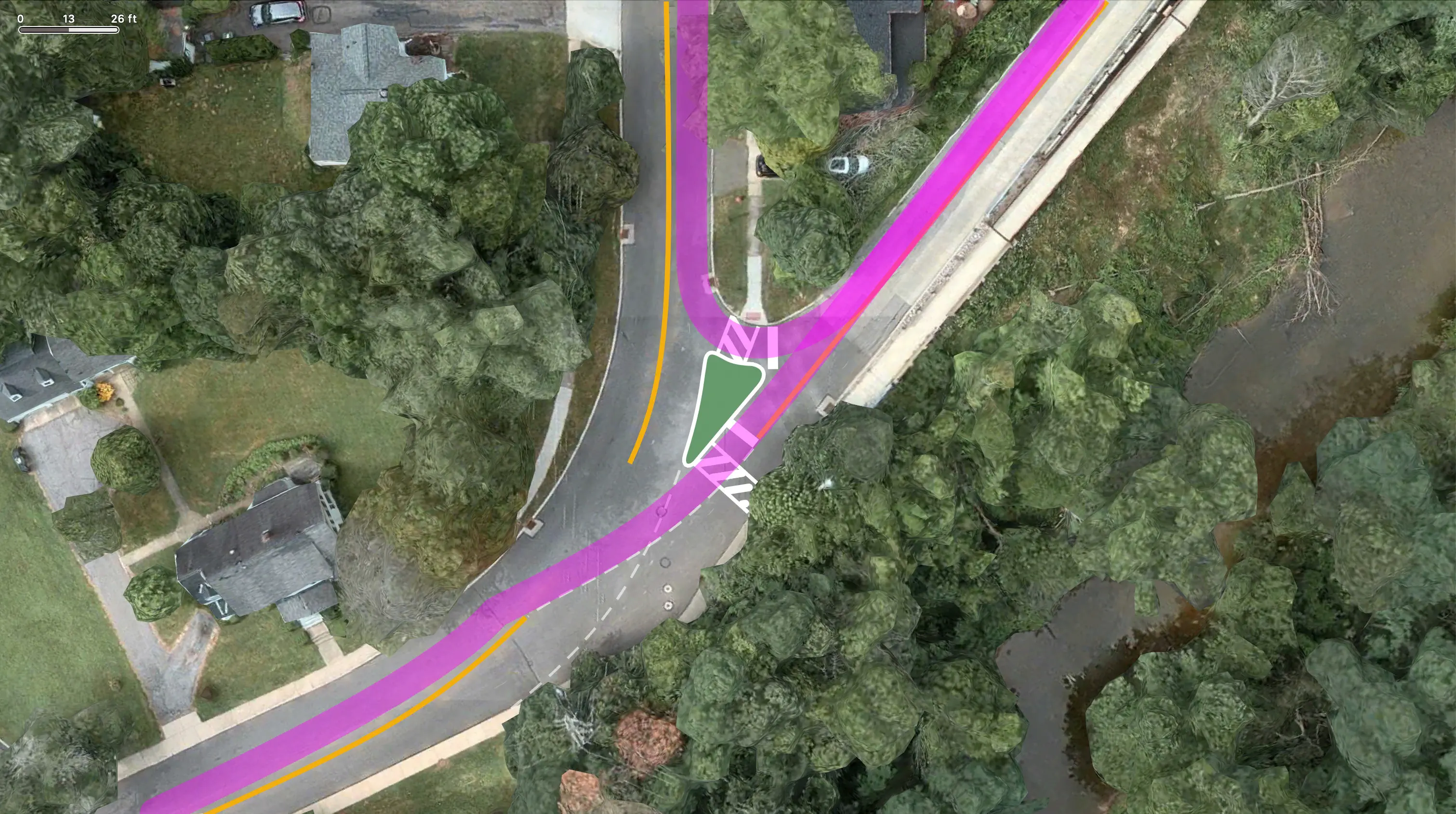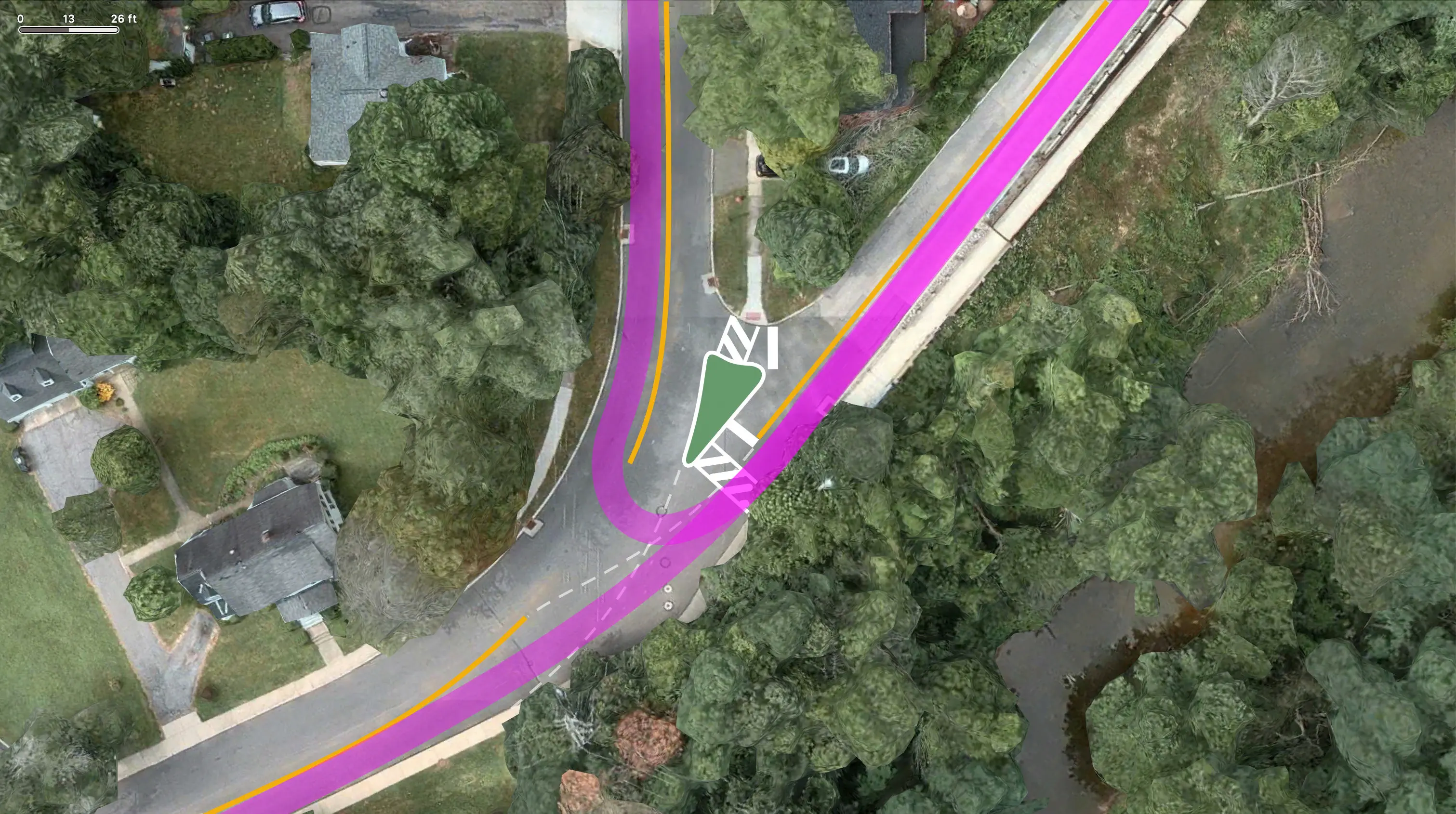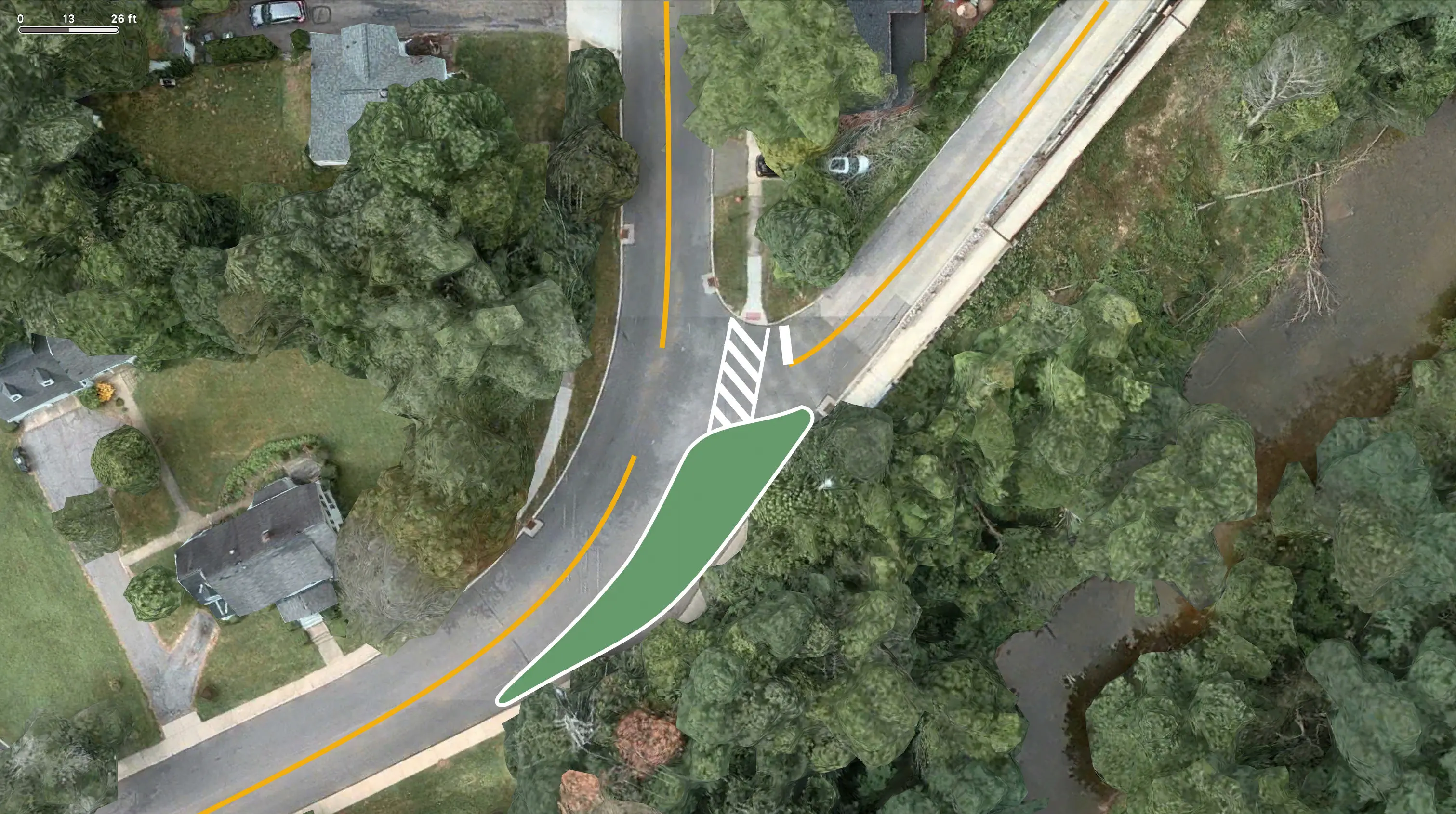An Analysis of the Intersection of East Orange, North, and Mill Streets
I look into some of the factors that make this intersection dangerous for pedestrians and propose a couple of design changes to make it safer.
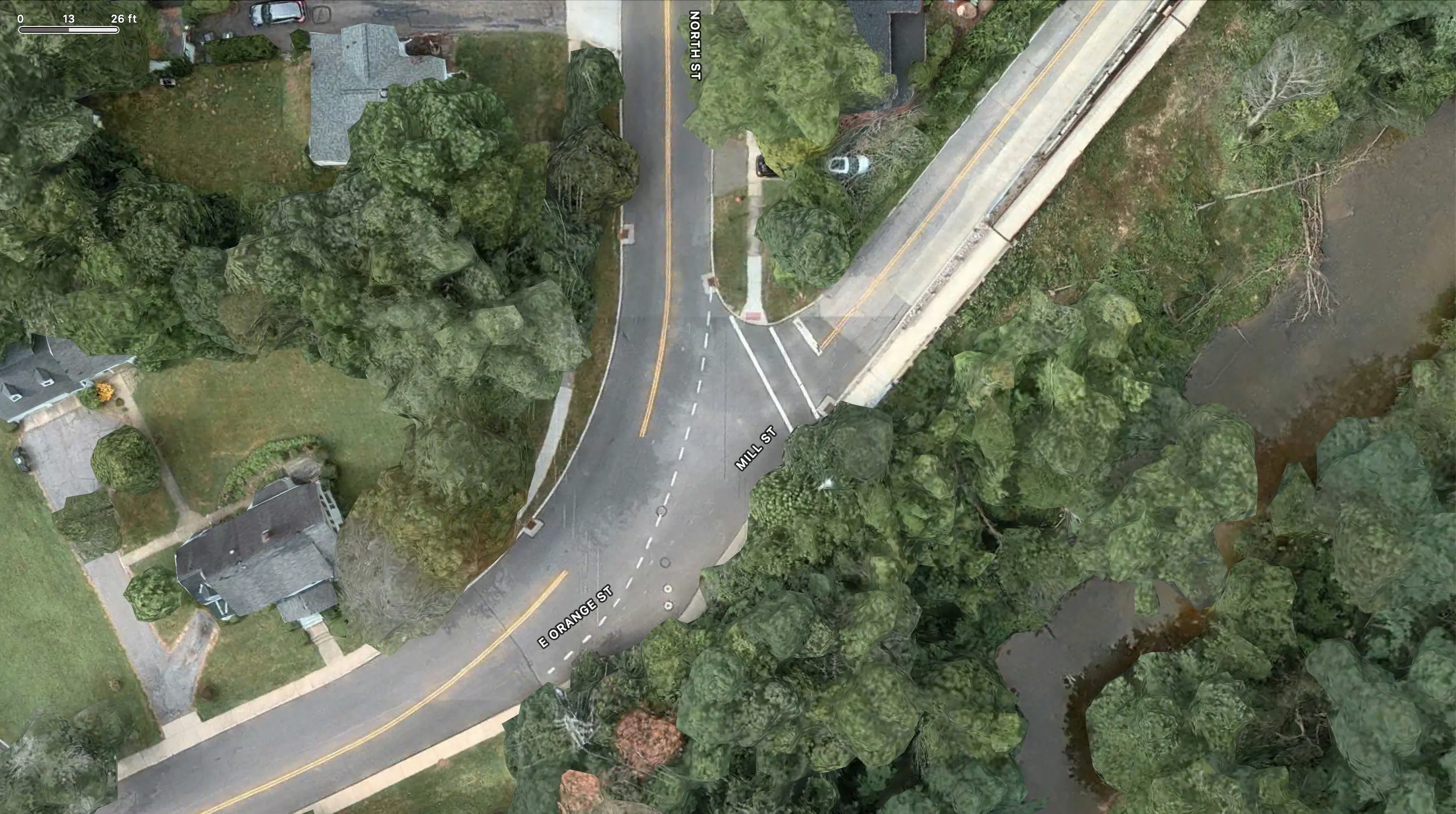
This is the intersection of East Orange, North, and Mill Streets in Chagrin Falls, Ohio. The speed limit on all three streets is 25 MPH. There is a single crosswalk on Mill Street connecting the eastern sidewalk on North Street to the south (and only) sidewalk on Mill Street. This sidewalk flows uninterrupted to the southern sidewalk on East Orange Street. Within 500 feet of this intersection you’ll find a library, a church, a preschool, a village park, a walking trail, an arboretum, the Chagrin River, and about a dozen residences. We are reviewing this intersection in response to residents’ concerns regarding the safety of the pedestrian crosswalk and the intersection in general. We also anticipate increased vehicle traffic at this intersection during the impending Main Street bridge construction.
Observations
This intersection is huge. With all three streets intersecting unusual angles, the corners have been widened to their maximums. With the paint removed it starts to look more like an interstate ramp than residential streets. I estimate you could easily park 25 - 30 cars in this space. And wide lanes encourage higher speeds.
North Street to East Orange Street
Vehicles traveling from North Street to East Orange Street have clear visibility and do not traverse the crosswalk although – having possibly just come from a 35 MPH section of North Street – they are often exceeding the speed limit.
⚠️ Pedestrian risk: Low
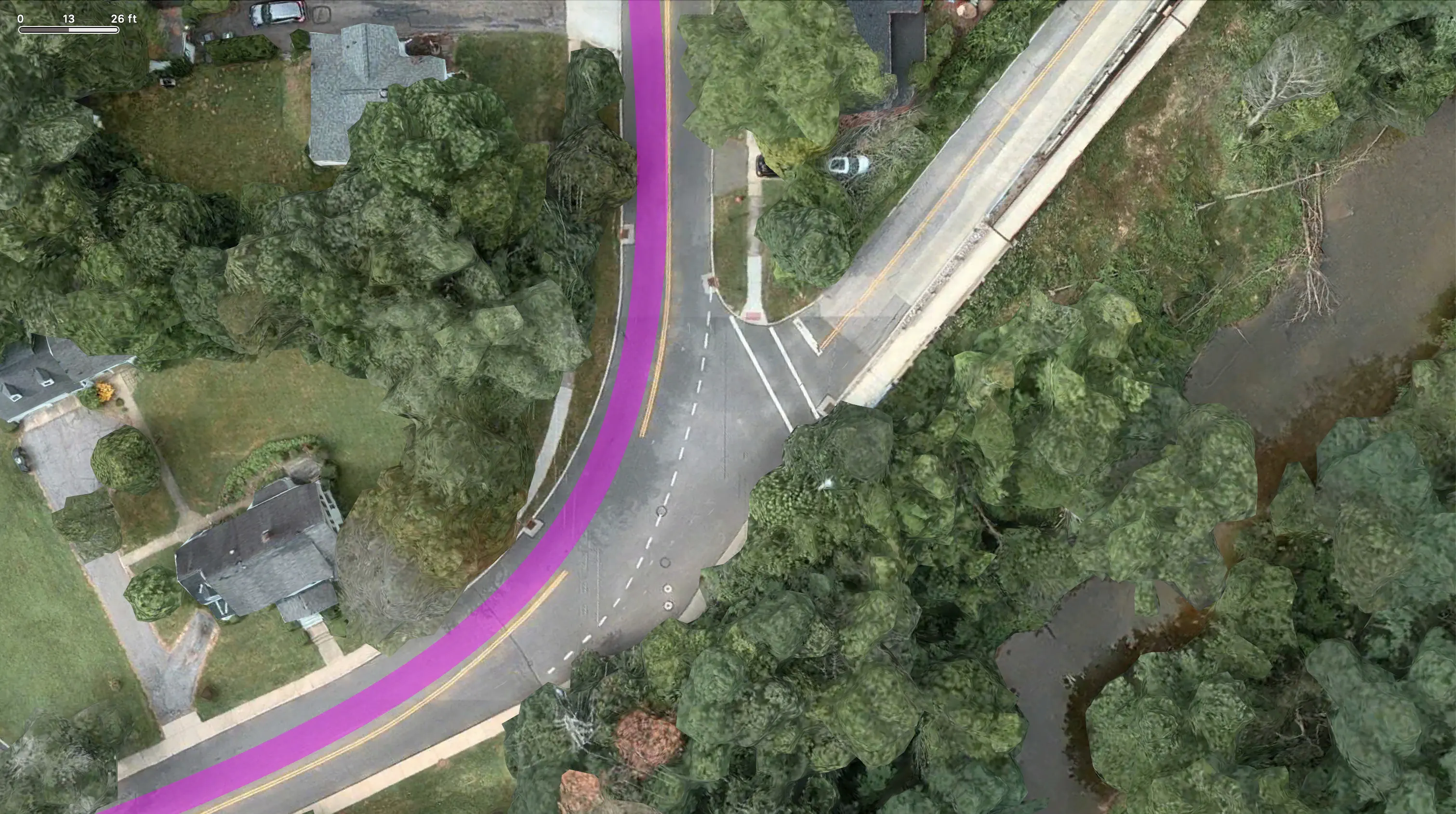
East Orange Street to North Street
Vehicles traveling from East Orange Street to North Street also have clear visibility and do not traverse the crosswalk. However, many drivers do not signal as they perceive the turn from East Orange Street to North Street as a continuation of the same road, creating a challenge for both vehicles turning right from Mill Street and pedestrians attempting to use the crosswalk.
⚠️ Pedestrian risk: Low

East Orange Street to Mill Street
Vehicles traveling from East Orange Street to Mill Street have the best view of the crosswalk and both entrances but also frequently do not signal. They too perceive the turn from East Orange Street to Mill Street as a continuation of the same road, creating uncertainty for pedestrians attempting to use the crosswalk.
❗ Pedestrian risk: Moderate
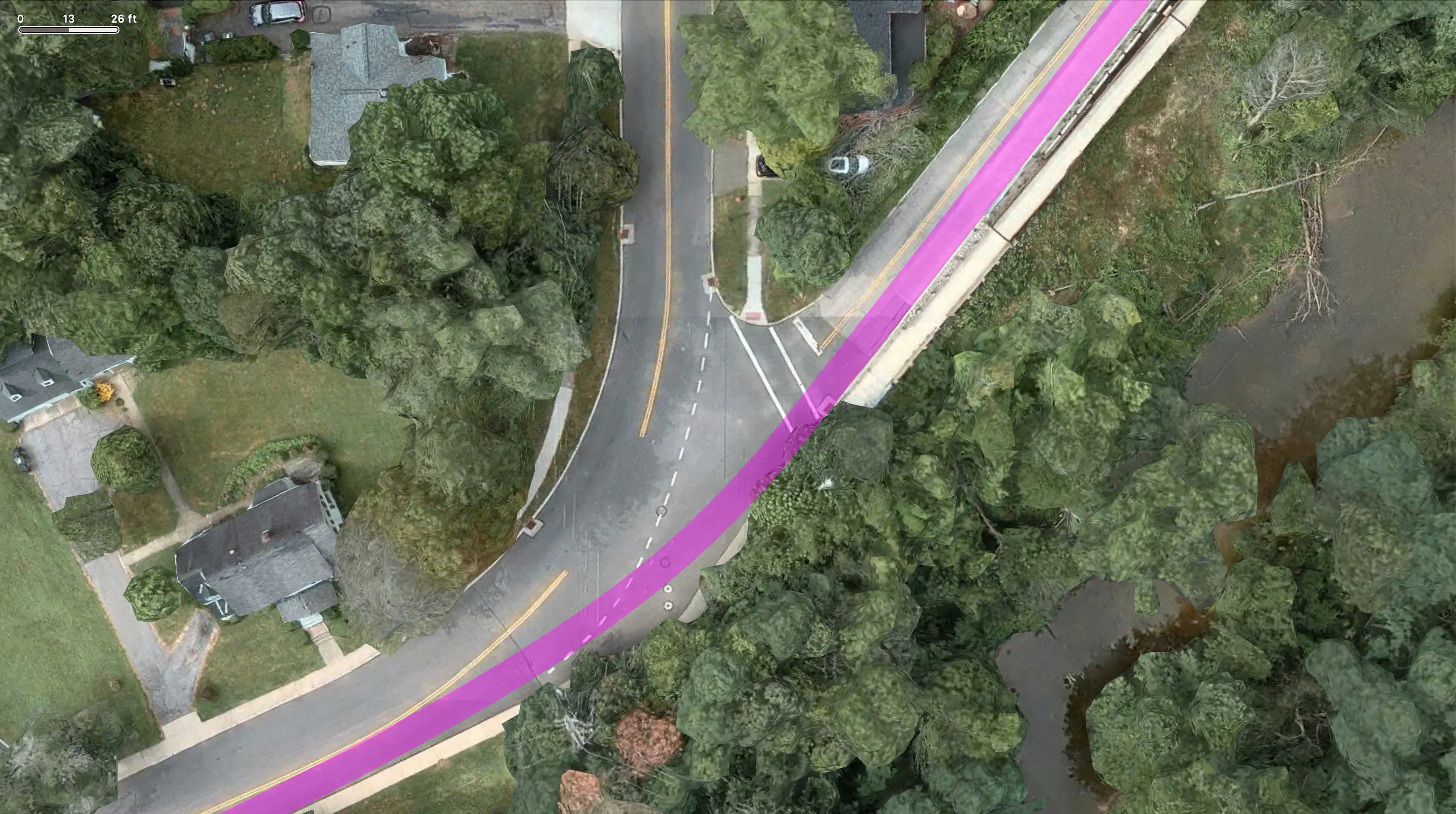
North Street to Mill Street
Vehicles traveling from North Street to Mill Street often approach quickly, turn tightly, and may be more focused on watching for oncoming traffic from East Orange Street than pedestrians in or entering the crosswalk.
‼️️ Pedestrian risk: High
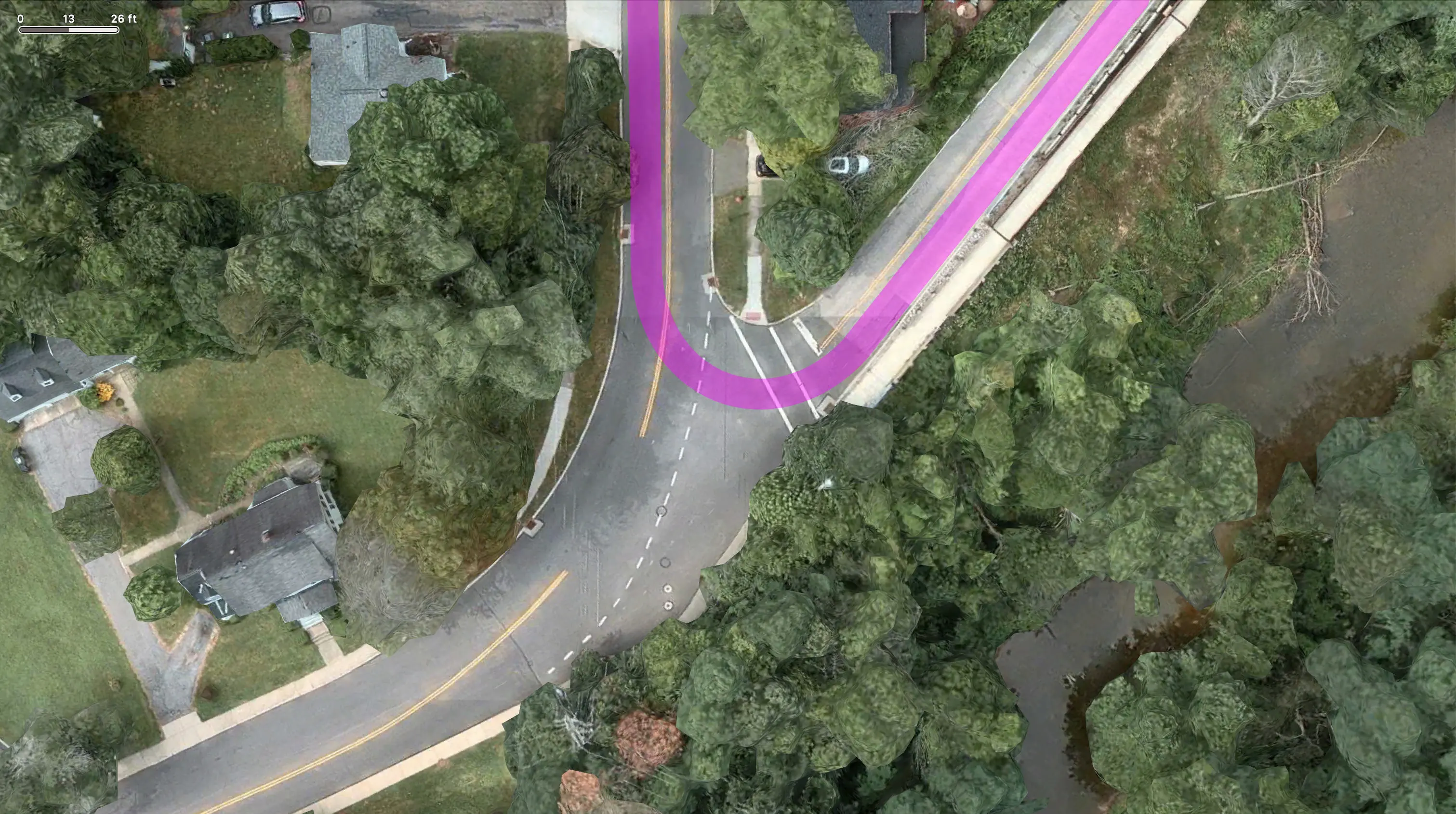
Mill Street to North Street
Vehicles traveling from Mill Street to North Street have a decent view of oncoming (east/northbound) traffic on East Orange Street, but poor visibility of pedestrians on the sidewalk until they are at or past the stop bar. Drivers frequently roll through the stop bar and into the crosswalk, creating a hazard for southbound pedestrians entering the crosswalk.
‼️️ Pedestrian risk: High
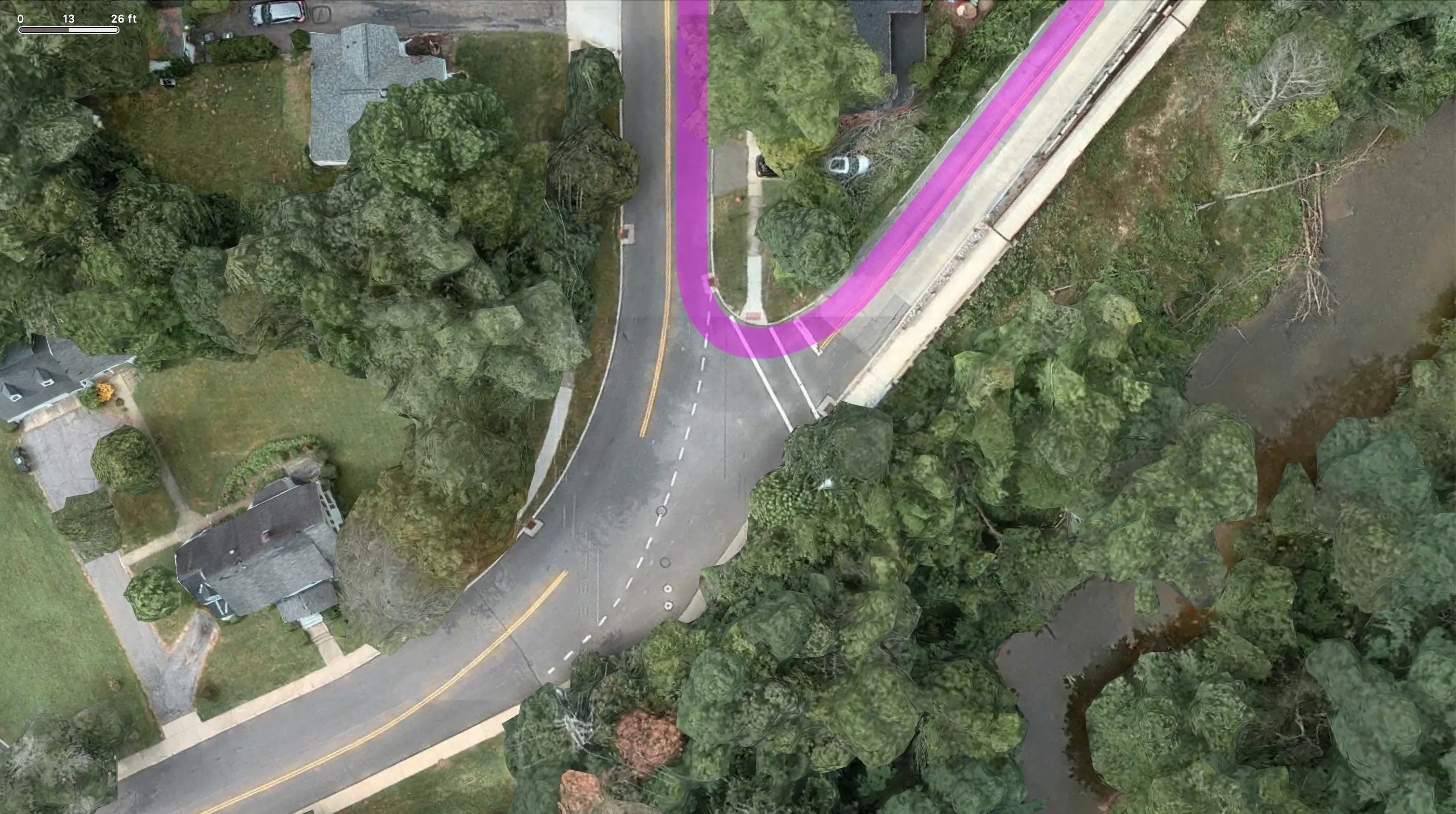
Mill Street to East Orange Street
Vehicles traveling from Mill Street to East Orange Street face a number of challenges. Because the Mill Street crosswalk is positioned (and angled) away from East Orange Street, the stop bar is far enough back that it’s not possible to see oncoming traffic. As a result, most drivers ignore the stop bar entirely and roll straight into the crosswalk, stopping there to look right before proceeding to East Orange.
‼️️ Pedestrian risk: High
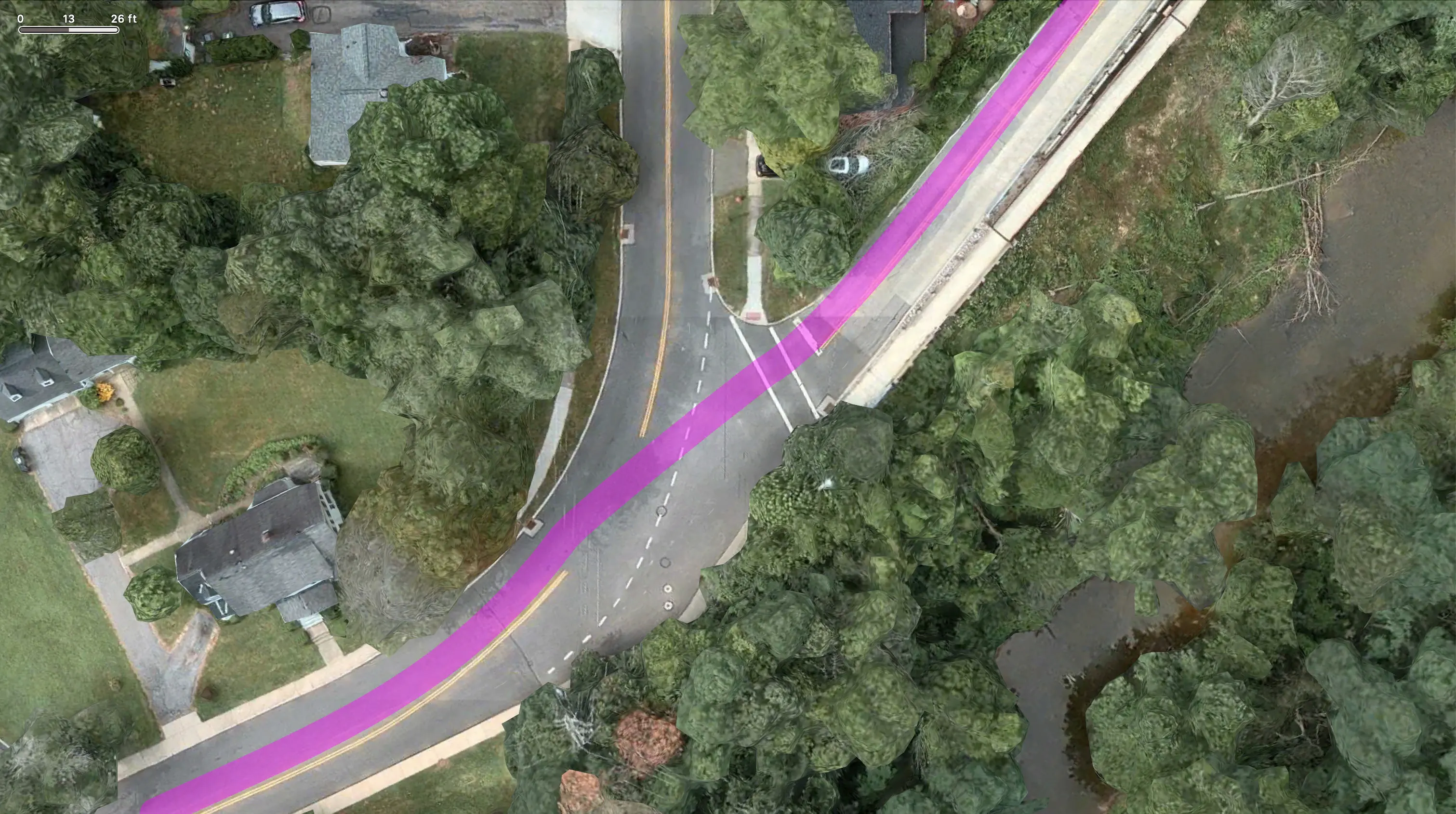
I observed eastbound traffic on Mill Street for about fifteen minutes each on the afternoon of June 1st and 8th, and made a compilation video of a random sampling of drivers. Very few people come to a complete stop, and most barely even slow down as they roll through the stop bar and into the crosswalk.
Conclusions
I believe that the design of this intersection – the unusual angles, the unnecessarily wide lanes, and the poor visibility of the sidewalk from several approaches – encourages drivers to speed and contributes to a dangerous situation for drivers and especially pedestrians.

Objectives
Given the above, I thought about how I would redesign this intersection with the following goals:
- Reduce the crossing distance for pedestrians.
- Give vehicles traveling from Mill to East Orange room to pull out farther and see oncoming traffic from North Street and East Orange Street.
- Encourage vehicles traveling from North to Mill to slow down, and improve the line of sight to pedestrians in the crosswalk.
- Encourage vehicles traveling from East Orange to Mill to slow down.
Option 1: Pedestrian Island and Slip Lane
Using only paint and reflective posts, the intersection can be reconfigured with a pedestrian island, creating a slip lane from Mill to North. This design would improve the view for drivers turning from Mill Street to North Street. By moving the northern portion of the crosswalk closer and parallel to North Street, drivers can pull farther up without crossing the stop bar. And by creating a separate lane for westbound traffic heading to Orange Street, the stop bar can be even farther out, giving drivers a much better view of southbound traffic from North Street. While this design would not shorten the crosswalk distance, it would break it into two, shorter sections and reduce the number of directions that vehicle traffic can be coming from. I believe the pedestrian island will also help calm traffic approaching the intersection and reduce vehicle speeds.
Option 2: T-shaped Intersection
Alternatively, the intersection can be reconfigured as a t-shaped intersection. This would shorten the overall pedestrian crossing distance and clarify where pedestrian and vehicle paths cross. Making the crosswalk parallel to North Street allows the Mill Street stop bar to be farther out, which improves the drivers view of both oncoming traffic and the northern crosswalk entrance. By creating a more defined “turn”, it will also encourage drivers to slow down and use a turn signal.
Either of these changes can be made relatively quickly and inexpensively, and if successful can be made permanent with modified curbs and sidewalk ramps.
